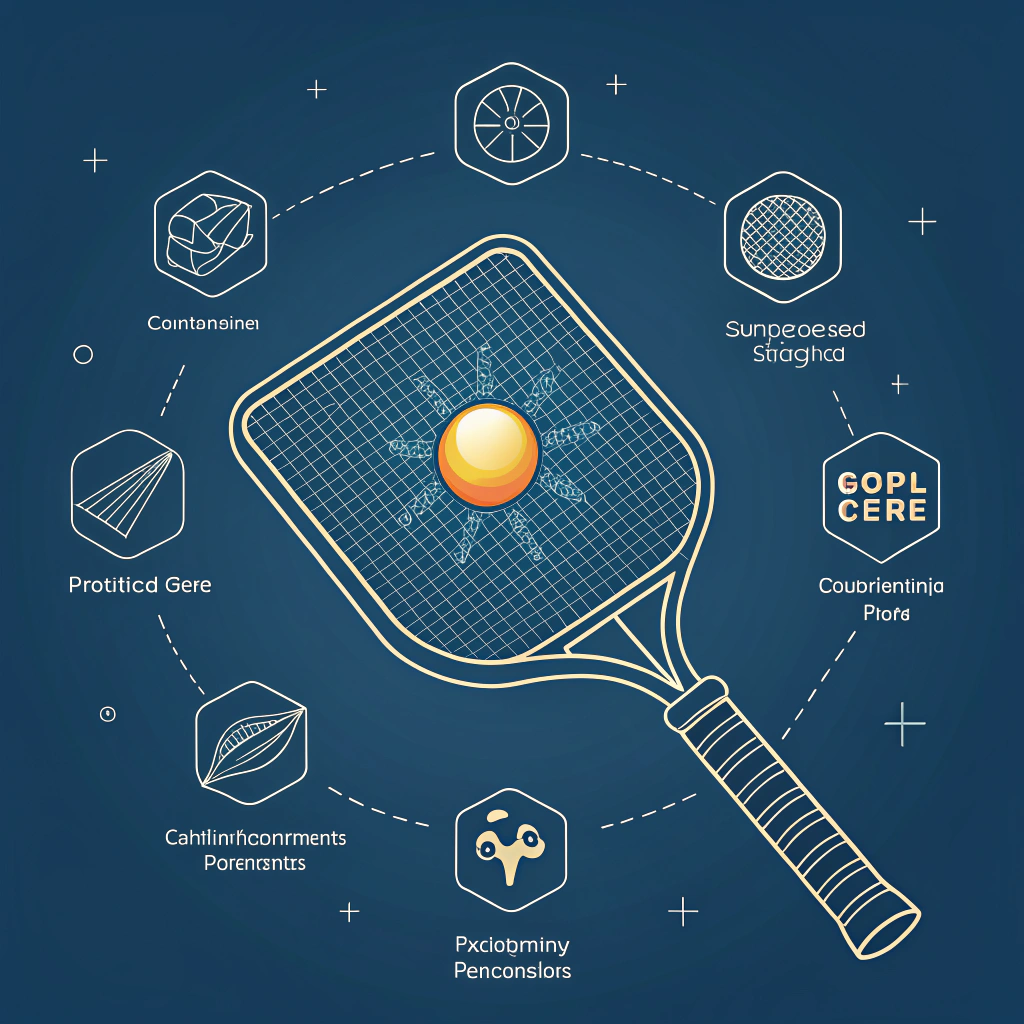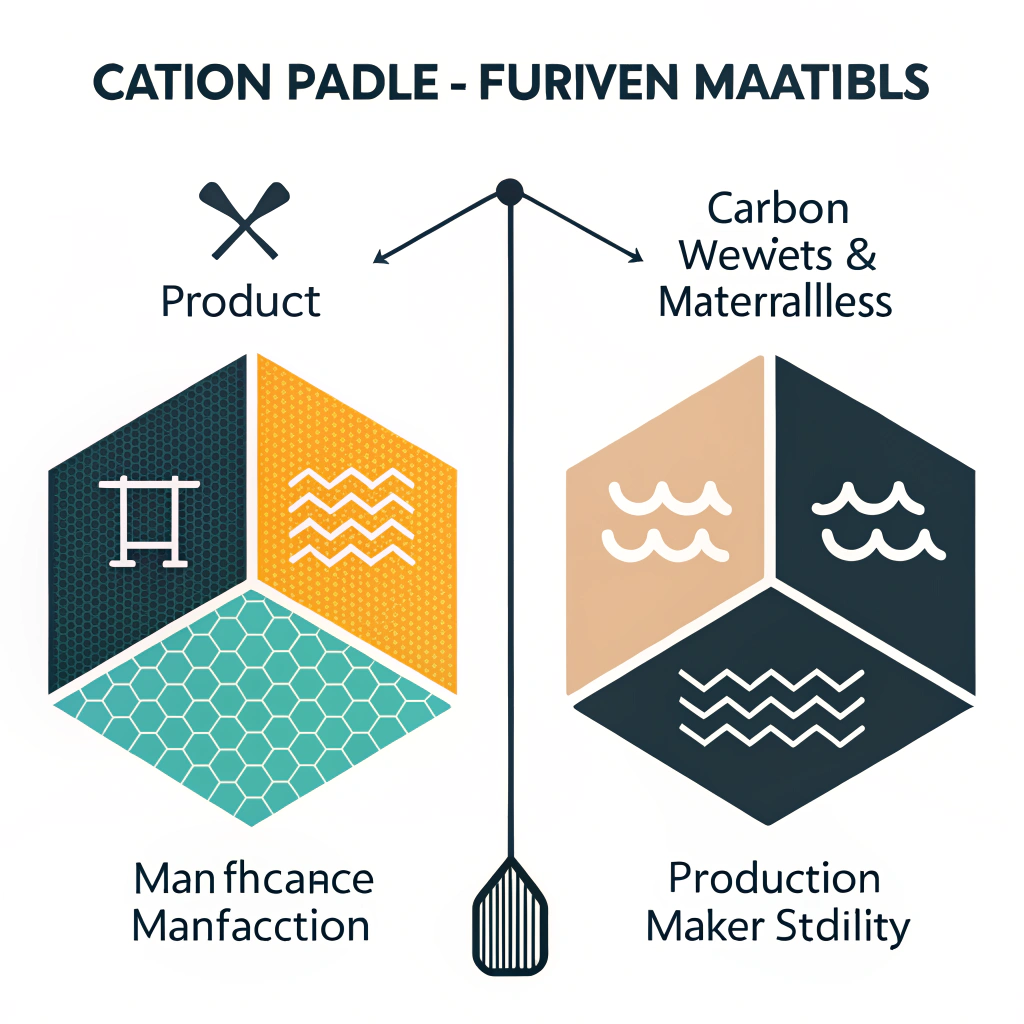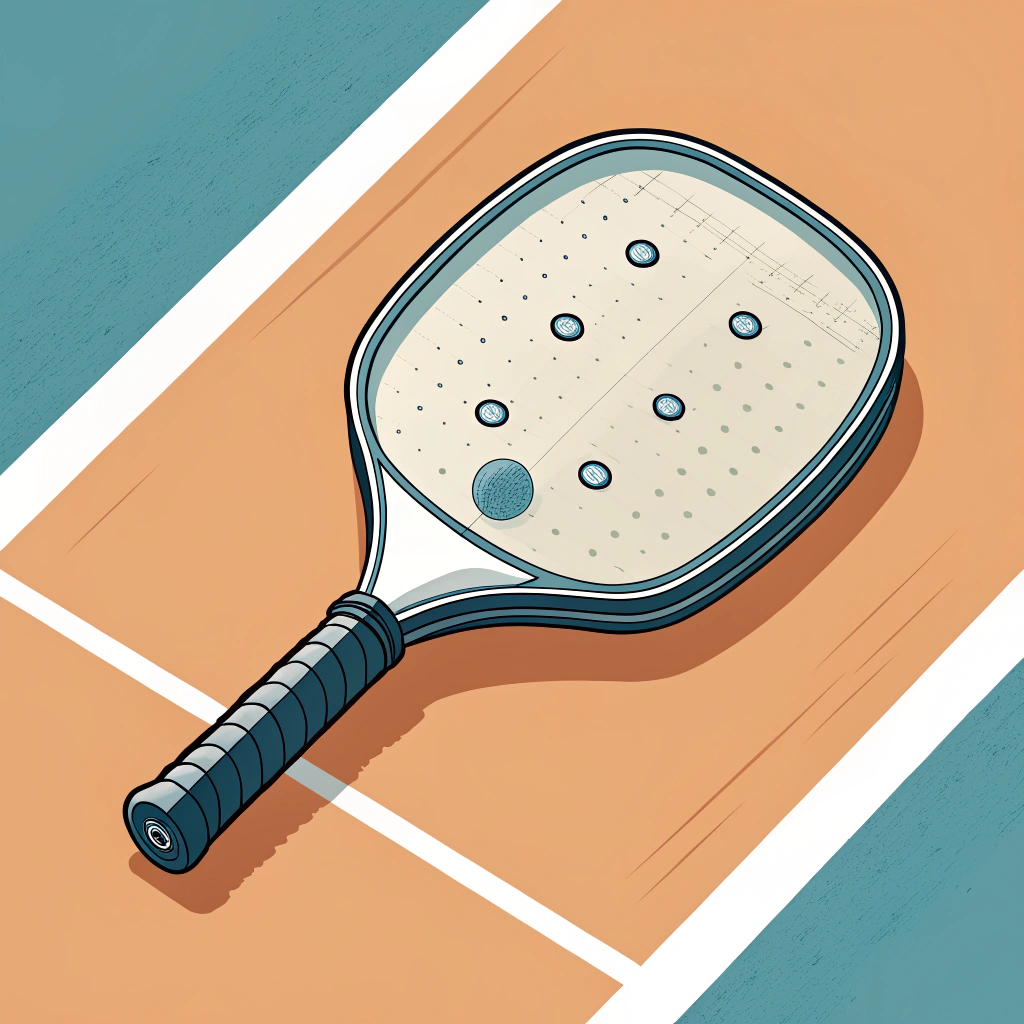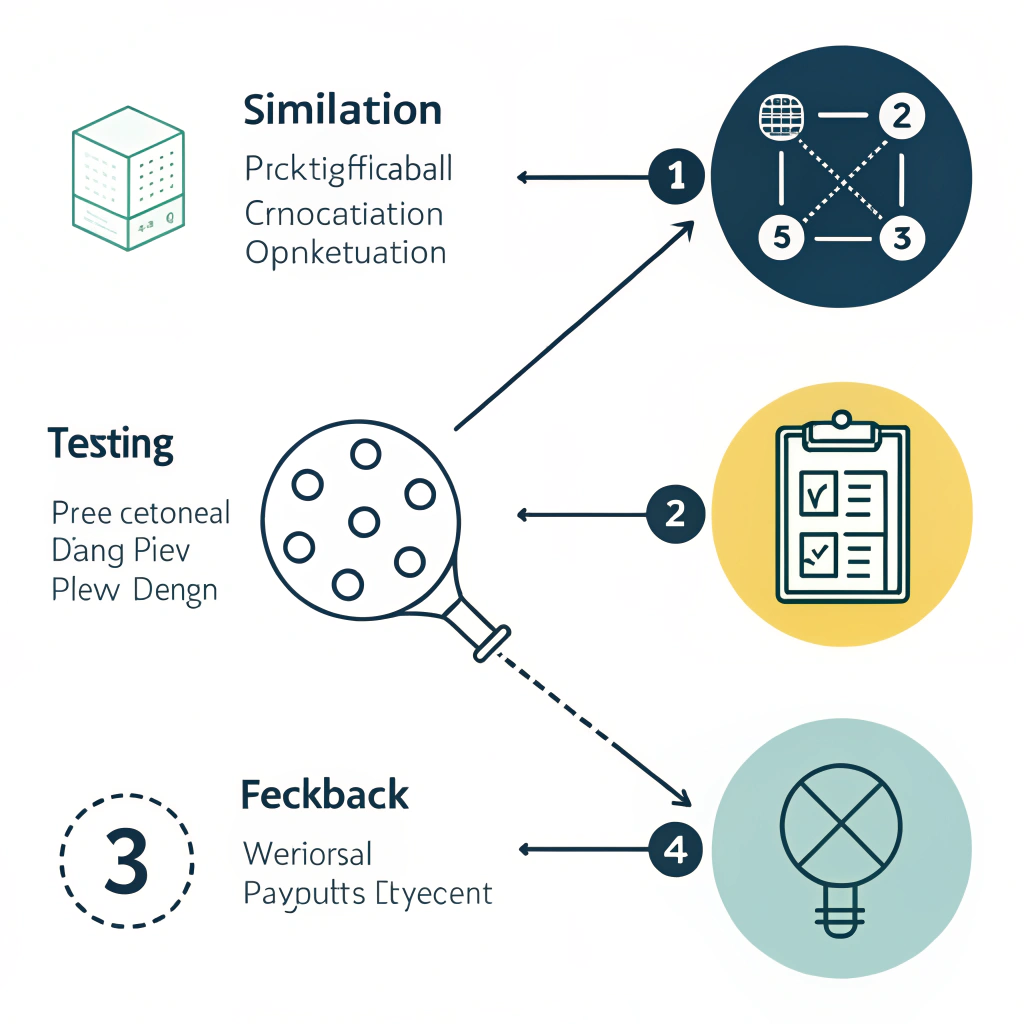The sweet spot1 in pickleball paddles is not just marketing hype—it is a scientifically and technologically driven design feature that enhances performance when executed through precise material selection, production processes, and ergonomic design. In this article, we explore the reality of the sweet spot in pickleball paddles, examine advanced manufacturing methods, debunk common myths, and offer actionable insights for B2B decision-makers in the sporting goods industry.
The term sweet spot refers to the optimal impact area on a pickleball paddle where the ball makes the best contact, resulting in maximum power, consistent ball rebound, and enhanced control. For B2B buyers, understanding this concept is essential, especially when evaluating production claims and performance metrics.
Many industry professionals debate whether the sweet spot is a scientifically measurable feature or just a marketing term. This confusion often arises from:
- Inconsistent testing methods: Different manufacturers have varying methods to test for a sweet spot.
- Material diversity: The use of advanced materials such as carbon fiber2 (3K, 12K, T300) and fiberglass can create subtle performance differences.
- Production processes: Techniques like hot pressing, cold pressing, and Thermoforming3 influence paddle dynamics and the resultant sweet spot.
As a result, B2B decision-makers require clear technical evidence and comparative data to evaluate paddle performance effectively.
To better understand paddle performance and the sweet spot, it’s crucial to examine the influencing factors through a technical lens.
Advanced materials used in paddles play a significant role in determining the sweet spot's characteristics:
-
Carbon Fiber Variants:
• 3K Carbon Fiber: Offers excellent strength and flexibility, leading to a dynamic rebound effect.
• 12K Carbon Fiber: Enhances durability and creates a smoother paddle face, which can refine the sweet spot area.
• T300 Carbon Fiber: Balances lightweight performance with high tensile strength, influencing the paddle's overall responsiveness. -
Fiberglass:
Fiberglass paddles generally offer a larger sweet spot compared to pure carbon fiber due to increased flexibility and wider impact surfaces. -
Composite Structures:
Using a mix of materials, such as a combination of carbon fiber and fiberglass, enables the fine-tuning of paddle performance. Additionally, the core material—whether it is Nomex Honeycomb4, Aluminum Honeycomb, or Polymer Honeycomb—contributes to the paddle's shock absorption and balance, directly affecting the sweet spot behavior.
The manufacturing technique is as vital as material composition. Here’s how different processes affect paddle performance:
-
Hot Pressing:
This process applies heat and pressure to form the paddle, resulting in:
• High production efficiency.
• Enhanced impact resistance.
• A stable structure that translates into a more reliable sweet spot performance, though the material feel might change. -
Cold Pressing5:
Processed at room temperature with controlled pressure, cold pressing ensures:
• Precise control over paddle thickness and structure.
• Preservation of the material’s inherent properties for better ball control and paddle responsiveness.
• Slight trade-offs in production efficiency. -
Thermoforming:
By heating materials to a soft state and molding them, thermoforming offers:
• Intricate shape design which caters to tailored sweet spot dimensions.
• Improved material distribution for long-lasting performance stability.
• Higher production costs and extended cycle times, making it ideal for premium or custom-made paddles.
To provide a clearer comparison, consider the table below that summarizes the key attributes of paddle materials and production processes as they relate to sweet spot performance:
| Attribute/Process | 3K Carbon Fiber | 12K Carbon Fiber | Fiberglass | Hot Pressing | Cold Pressing | Thermoforming |
|---|---|---|---|---|---|---|
| Sweet Spot Consistency | Dynamic rebound, slight variability | Smoother, more defined sweet spot | Larger, flexible impact area | High impact resistance, stable structure | Precise material properties maintained | Intricate design for tailored performance |
| Production Efficiency | High | High | Moderate | High | Lower relative efficiency | Lower efficiency, premium production |
| Material Durability | Excellent | Superior | Good | Excellent | Excellent | Superior with custom tuning |
| Vibration Dampening | Moderate | Moderate | High | Consistent structural stability | Preserved material feel | Enhanced through design optimization |
This table helps decision-makers visualize how material choices and production techniques interplay to affect the sweet spot. The careful selection and combination of these factors redefine paddle performance.
At NEX Pickleball, we have applied our advanced production techniques to refine the sweet spot in our paddles. Consider the following case study:
A competitive pickleball team required paddles with enhanced control and consistent impact performance. By collaborating with the design team and leveraging our Thermoforming process combined with a Carbon Fiber and Fiberglass Composite, we were able to:
- Increase the paddle's impact surface area.
- Reduce vibration through the use of a Nomex Honeycomb Core.
- Achieve an ergonomic design where the sweet spot was both strategically positioned and enlarged for better consistency.
Process and Outcome:
- Analysis Phase: We began with testing various designs using high-speed cameras and vibration sensors.
- Material Integration: By integrating T300 Carbon Fiber for strength and E-Glass Fiberglass for flexibility, we balanced power and control.
- Iterative Testing: Multiple iterations of design adjustments were conducted under simulation and on-court trials.
- Final Product: The final paddle design resulted in a 15% improvement in ball speed and a 20% increase in shot consistency when the ball contacted the sweet spot.
These improvements were validated by both laboratory tests and on-court performance assessments, reinforcing the importance of material science and precise production processes in optimizing paddle performance.
Beyond material and production, the ergonomic design of a paddle significantly influences the sweet spot dynamics. Features such as grip size, weight distribution, and surface texture are geared towards ensuring that the paddle not only performs under competitive conditions but also offers comfort during prolonged play.
-
Adjusting Weight Distribution:
Adding weight to the paddle’s perimeter can enlarge the sweet spot. For example, integrating lead tape strategically along the 9 and 3 o'clock positions near the handle has been proven to improve sweet spot size and overall paddle balance. -
Grip and Surface Texture:
Paddle surfaces are often enhanced with treatments that increase ball control and spin. Ergonomically designed grips reduce hand fatigue, allowing players to maintain precision shot placement, even after extended play.
At NEX Pickleball, we follow these steps to ensure optimal sweet spot performance:
- Initial Design Draft: Create multiple design prototypes focusing on different weight distributions.
- Simulation Testing: Use advanced simulation software to predict sweet spot behavior under various impact scenarios.
- Prototype Trials: Conduct controlled field testing with both amateur and professional players.
- Feedback Loop: Integrate player feedback to adjust material blends and weight distribution.
- Finalizing Design: Apply the final approved design to full-scale production, ensuring each paddle meets detailed performance standards.
By integrating ergonomic principles into every step of the production process, we ensure that our paddles not only perform well technically but also meet the practical needs of players across levels.
For companies looking to partner with a manufacturer or to develop new paddle lines, consider the following best practices:
-
Material Quality:
Ensure that the paddle uses high-grade carbon fiber variants and fiberglass that are proven to enhance sweet spot performance and durability. -
Production Process Transparency:
Choose manufacturers that offer upfront details on their production techniques—whether it’s hot pressing, cold pressing, or thermoforming—and can demonstrate how these methods improve paddle performance. -
Ergonomic Design:
Evaluate how the paddle's geometry and grip design contribute to maximizing the sweet spot while reducing player fatigue. -
Testing & Certification:
Look for products that have undergone rigorous testing, including vibration and stress tests, to ensure consistency in the sweet spot and overall paddle reliability. -
Customization Options:
Consider manufacturers, like NEX Pickleball, that offer on-demand printing and custom paddle services, allowing you to tailor the equipment to specific performance or branding needs.
| Evaluation Criteria | Key Questions | What to Look For |
|---|---|---|
| Material Composition | Is the paddle made of advanced materials? | Use of 3K/12K Carbon Fiber, fiberglass, composites |
| Production Methods | How is the paddle manufactured? | Transparent use of hot pressing, cold pressing, thermoforming |
| Ergonomic Design | Is the paddle comfortable? | Well-designed grip, balanced weight distribution |
| Performance Testing | Has the paddle been rigorously tested? | Data-backed results on sweet spot consistency and vibration mitigation |
| Customization & Branding | Can the design be customized? | Options for custom prints, tailored weight distribution |
This checklist helps guide B2B purchasers through the key technical aspects that ensure reliable performance and a competitive edge in the market.
In summary, the sweet spot of a pickleball paddle is a critical performance feature influenced by advanced materials, precision manufacturing processes, and ergonomic design. By understanding the interplay of these factors, B2B decision-makers can make informed purchases and enhancements in product design.
Actionable insights include:
• Conduct detailed evaluations of material properties and production methods.
• Prioritize manufacturers who showcase robust testing and transparent processes.
• Consider customizations in weight distribution and ergonomic design to maximize performance outcomes.
Adopting these strategies can lead to more optimized products that not only meet but exceed the performance expectations of today's competitive pickleball environment. For more technical details or to discuss tailored solutions, please do not hesitate to reach out to our expert team.
-
Is there really a difference in pickleball paddles?
Yes, there is a noticeable difference. Thinner paddles tend to offer more pop and power due to their lighter build, which enhances agility, while thicker paddles provide greater control and consistency in each shot. The differences arise primarily from design choices, material composition, and production methods. -
Does a pickleball paddle have a sweet spot?
Indeed, pickleball paddles do have a sweet spot—the area on the paddle face where ball impact results in the most consistent and powerful rebound. The shape, material, and manufacturing process all contribute to defining the size, location, and effectiveness of the sweet spot. -
How can you make the sweet spot bigger on a pickleball paddle?
Enhancing the sweet spot typically involves adjusting the paddle's weight distribution. Many players add weight, such as lead tape placed near the perimeter (around the 9 and 3 o’clock areas), which helps in enlarging the sweet spot for better shot consistency.
-
sweet spot: Click to read more about the optimal impact area on sports equipment and how its design can significantly enhance performance. ↩
-
carbon fiber: Click to learn about the properties of carbon fiber, its various grades, and its impact on the overall performance and durability of sports equipment. ↩
-
Thermoforming: Click to explore the thermoforming process, its benefits in manufacturing intricate designs, and how it plays a role in achieving tailored performance characteristics. ↩
-
Nomex Honeycomb: Click to understand the role of Nomex Honeycomb in composite structures, its impact on shock absorption, and why it’s a favored core material in high-performance sports equipment. ↩
-
Cold Pressing: Click to read about the cold pressing technique, how it preserves material properties, and its significance in achieving precision in production processes. ↩







